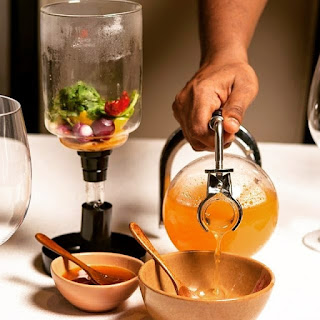Tamales a wrapped tradition
Rozantho a Mexican immigrant at one of the restaurants where I worked, was the person who was a Pot washer, He was as old as my dad yet he was much faster and agile than me, I remember him beating the stop clock in dishing out Naan's (Indian bread) in no less than a split of a second,He gave us gifts for Christmas (for every one of the 50 odd staffs), and at times even got us breakfasts from his parts of the city, on Sundays it was special he would ask his friends (ladies) to cook up a wrapped tradition that we will all feast on for our hangover brunch and they were the Tamales.
Rozantho is from Mexico, and over there the most traditional tamales are made from pork or chunks of beef, though chicken (leg meat, preferably; the breast can be too dry) is also popular. In the southwestern state of Oaxaca, tamales are wrapped in plantain leaves and filled with chicken and onions flavored by mole negro, a sauce of poblano peppers and chocolate. In Tabasco, on the Gulf Coast, they are filled with garfish.But what he would get us was pure pulled pork tamales.
In Venezuela, tamales are called hallacas and are stuffed with pork, raisins and olives. In Cuba, masa and meat are cooked together on the stove in a porridge-like concoction called tamal en cazuela.
In northeastern Brazil, from where I started to write this blog from,the closest thing to tamales are pamonhas, corn-and-milk dumplings wrapped in corn husks that can be served plain or filled with cheese or minced meat; they are eaten during the Feast of St. John the Baptist, in June.
Tamales came to the United States through obvious entry points, like San Antonio and Los Angeles, where, by the 1870s, the City Council was fighting to legislate against vendors who sold tamales out of wagons and pushcarts. But they also took root in some unexpected places, like the Mississippi Delta, where they are believed to have been introduced by migrant Mexican laborers who picked cotton in the early 20th century. Today it is people like Rozantho are the ones who keep the tradition there.
They can be cooked in steaming pots, rice cookers,After the masa is spread on the husk, a generous scoop of filling goes mostly in the middle. Then, the tamale is folded as you would fold the front ends of a diaper — one side over the other and the thinner end on top. The husks of the corn are the real divinity, the aura imparted while cooking compliments the masa and the pulled pork or for that matter ant stuffing.
It's been almost 10 years now, Yet Rozantho's Traditional Tamales had more soul to it than thing I had ever tasted,as it was the city of brotherly love they call it,the memory of tamales will always be savoured all thru my Eureka life.
Rozantho is from Mexico, and over there the most traditional tamales are made from pork or chunks of beef, though chicken (leg meat, preferably; the breast can be too dry) is also popular. In the southwestern state of Oaxaca, tamales are wrapped in plantain leaves and filled with chicken and onions flavored by mole negro, a sauce of poblano peppers and chocolate. In Tabasco, on the Gulf Coast, they are filled with garfish.But what he would get us was pure pulled pork tamales.
In Venezuela, tamales are called hallacas and are stuffed with pork, raisins and olives. In Cuba, masa and meat are cooked together on the stove in a porridge-like concoction called tamal en cazuela.
In northeastern Brazil, from where I started to write this blog from,the closest thing to tamales are pamonhas, corn-and-milk dumplings wrapped in corn husks that can be served plain or filled with cheese or minced meat; they are eaten during the Feast of St. John the Baptist, in June.
Tamales came to the United States through obvious entry points, like San Antonio and Los Angeles, where, by the 1870s, the City Council was fighting to legislate against vendors who sold tamales out of wagons and pushcarts. But they also took root in some unexpected places, like the Mississippi Delta, where they are believed to have been introduced by migrant Mexican laborers who picked cotton in the early 20th century. Today it is people like Rozantho are the ones who keep the tradition there.
They can be cooked in steaming pots, rice cookers,After the masa is spread on the husk, a generous scoop of filling goes mostly in the middle. Then, the tamale is folded as you would fold the front ends of a diaper — one side over the other and the thinner end on top. The husks of the corn are the real divinity, the aura imparted while cooking compliments the masa and the pulled pork or for that matter ant stuffing.
It's been almost 10 years now, Yet Rozantho's Traditional Tamales had more soul to it than thing I had ever tasted,as it was the city of brotherly love they call it,the memory of tamales will always be savoured all thru my Eureka life.



Comments
Post a Comment